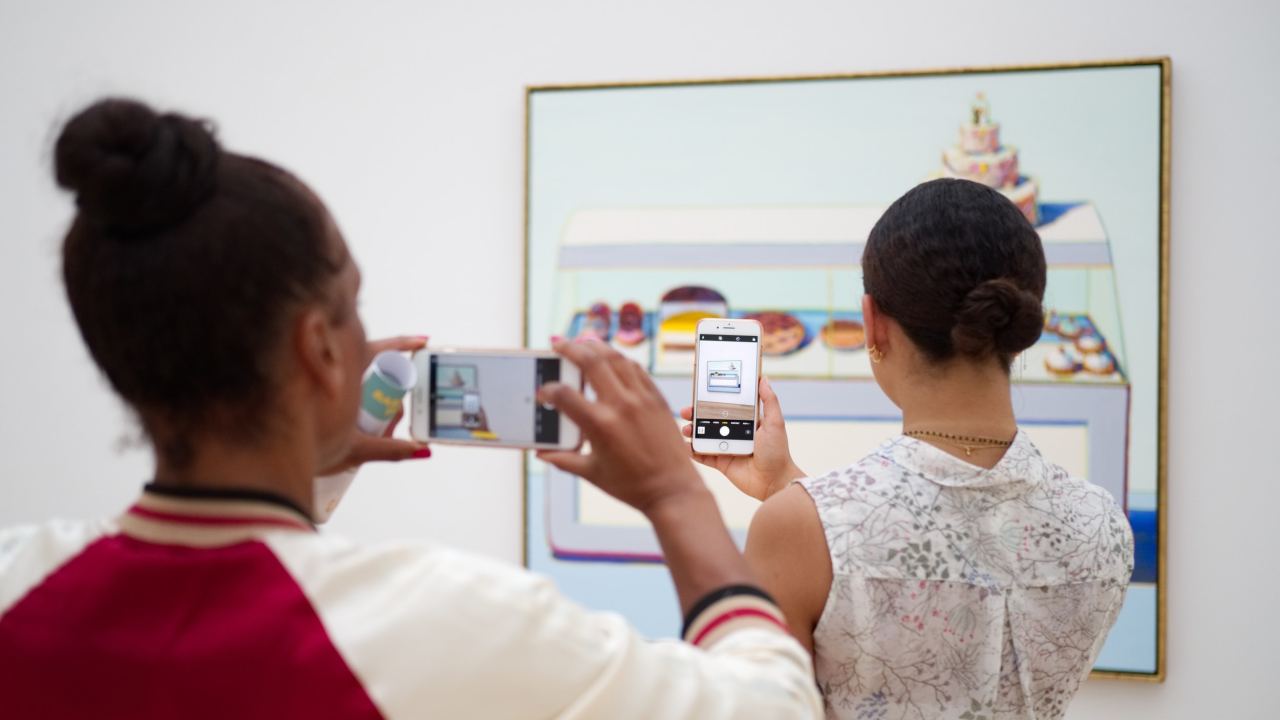
If I ever find myself with a few hours to spare, there’s no place I’d rather be than a museum. Visiting a new exhibit fills me with exhilaration, perspective, and knowledge.
But in North America today, there are a large number of people who do not gravitate to museums with the same zeal I do. In fact, a recent report from Colleen Dilenschneider shows that attendance to most U.S. cultural organizations hasn’t kept up with the country’s population growth over the past ten years, with 67 percent of cultural organizations (including museums) experiencing flat or falling attendance since 2009.
According to her report, one of the top reasons for this decline is people’s preference for other activities to fill their leisure time. While I’m disheartened by this, I guess I shouldn’t be too surprised given the vast array of other experiences people have to choose from nowadays—including hundreds of options outside the home and enough in-home electronic gizmos to make the Jetsons jealous.
The good news is, there is something museums can do to quickly and cost-effectively attract visitors. The even better news is: it’s a free, untapped resource that you can access immediately.
User-generated content and the modern-day museum visitor
More than ever before, visitors to museums are capturing and sharing photos and videos of their experiences across social media networks. These include breathtaking shots of museum architecture, selfies with exhibits, and pictures of friends enjoying unique event spaces or interacting with museum staff.
In other words, your current visitors are generating a wide variety of high-quality visuals on a daily basis. Visuals that, in the age of Instagram, might have more influence over a prospective visitor’s decisions than any other content type.
That’s why many museums have started putting this user-generated content to work in their marketing strategies. It lets happy visitors tell your story for you, using their positive experiences as word-of-mouth marketing. It’s a fresh way to communicate, access new audiences, and increase visibility.
Not sure where to start? Here are some simple ideas for how museums can leverage user-generated content as part of a successful marketing strategy.
1. To build an audience before launch
Before the launch of a new museum or exhibit, user-generated content can help you build an audience and anticipation.
If you’re launching a new museum, you can coordinate with neighborhood partners and sponsors to post about it on social media and encourage others to do the same. The Museum of Contemporary Art (MOCA) in Toronto did this while still under construction, working with local businesses to generate interest in their neighborhood, which lay well beyond the typical tourist hotspots. Their efforts gave people a feel for the neighborhood and all the interesting things to see and do there—including a visit to the new museum of course!
You can also use user-generated content to offer a “sneak peek” into an exhibit before it opens to the public. Why not entice a small but mighty group of influencers or sponsors to check out an exhibit’s construction or enjoy a behind-the-scenes tour? Or, just invite your own staff to show the exhibit from the perspective of the people who are bringing it to life. Be sure to ask attendees to share and tag their posts with your preferred hashtag, then watch the momentum build.
2. To remove visitor barriers
Historically, museums have featured images of installations in pristine, empty rooms as part of their marketing materials. When they do include people in their visuals, these people often look like a traditional and specific kind of museum visitor (i.e., older, white). Repeatedly featuring one demographic in marketing visuals doesn’t suggest an open and welcoming atmosphere. This is especially important to look out for considering four out of ten people in the U.S. feel that art or history museums aren’t for people like them.
Content generated by visitors is a great resource to better represent different demographics and ethnicities in your marketing, encouraging people from all walks of life to come through your doors. As Shannon Robb, Communications and Public Affairs Coordinator with the Denver Art Museum, said, “Content from people who are having experiences here helps us keep promoting the idea that an art museum is open and accessible to anyone who wants to come.”
A quick audit of your current visuals will indicate who is represented (or not). You can then begin to source content that better reflects the people who make up your community. If you’re short on user-generated content, try inviting underrepresented members of your community to enjoy early access to exhibits and encouraging them to post about their experience on social media.
3. To drive ticket and membership sales
What does it mean to visit your museum? What does it mean to be a member? Posting content from those who already enjoy your museum generates fantastic word-of-mouth advertising and paints an authentic picture of what new visitors and members will experience.
When it comes to enticing members, many museums currently describe membership benefits such as special access to exhibitions or programs. But few use compelling visuals to depict the actual experience of membership. Sharing existing members’ content provides a unique and valuable perspective to potential new members. It also serves as social proof that museum membership is something a peer group should consider.
In addition to social media, your website is also a great place to feature content from visitors. It will modernize the overall look and feel of your site and can also serve as a navigational element, meaning people can click on labeled images to connect directly to pages for admission or membership, etc. In my work with museums, I have seen this approach result in higher click rates.
4. To promote events and venue space
Many museums open up their space for a variety of events, from weddings to private parties and museum-hosted soirees. Instead of using images of empty rooms, why not get the party started by using visitor-generated content that shows what it’s like to attend an event at your museum?
The Canadian Museum of Nature does an excellent job of this on their facilities rental webpage to promote their event space, giving couples a firsthand look at what their wedding guests will see and experience.
Also in my hometown of Toronto, the Royal Ontario Museum (ROM) has successfully leveraged user-generated content from its weekly Friday Night Live event to attract over sixty-five thousand visitors, without any additional advertising. During the weekly bash, event coordinators put partygoers’ tagged photos up on big screens, encouraging others to capture and share the fun on their social media.
You can start small by selecting a few designated people to post live from an event. This will encourage other attendees to follow suit. You can then engage with the people who are posting about your event by reposting their content to Instagram Stories or participating in conversations that create a relationship with your brand.
5. To create connections
You can use visitor-generated content to create lasting connections by tapping into some of the fundamental reasons why museums exist, i.e., to provide a shared experience that teaches us something, provides a sense of belonging, and evokes emotion.
In this time of hyperconnectivity, your visitors will gladly capture and share their memorable and moving museum experiences across their social networks. You don’t need to look further than the use of hashtags like #museumlove or #museumselfie, which to date have more than 100 thousand tags and continue to connect current and future museum visitors.
User-generated content can have a powerful influence on someone’s decision to walk through your museum’s doors and to feel like they belong. It remains a largely untapped source of content that museums can use to reach their community.
About the author:
Museum lover Amrita Gurney is Vice President of Marketing at CrowdRiff, a company focused on unleashing the power of visual content in travel and tourism marketing.








